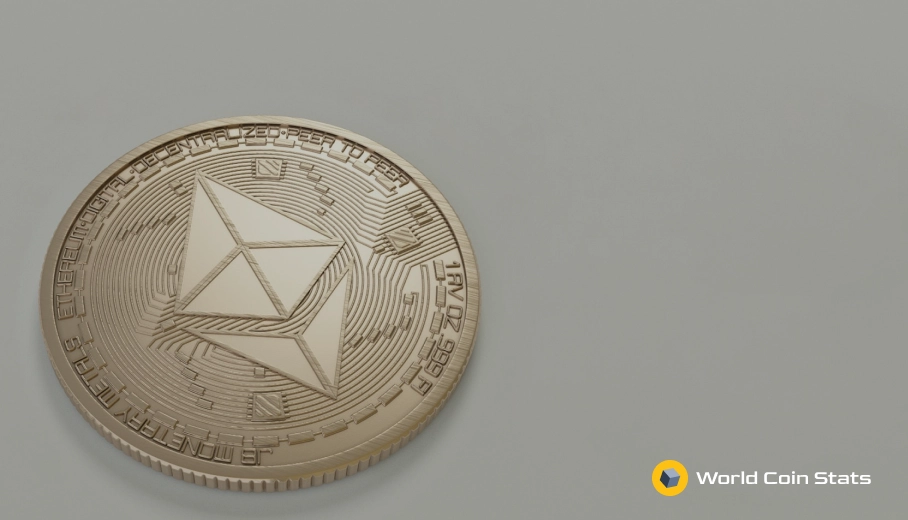Price Prediction for Ethereum After Staked Coins Are Unlocked
Ethereum has big plans to merge the Beacon chain, that’s the proof of stake Ethereum chain, into the proof of work Ethereum chain. This will turn Ethereum into a proof of stake blockchain, which is something that people have wanted for years.
This event will likely have some problems with it from a technological perspective. It’s a big change and one that not many blockchains have done.
One point that people often forget, however, has to do with all the staked coins in the Beacon chain that are currently locked. These coins will become unlocked once the merge occurs. The concern relates to the price of Ethereum, many people believe the price of Ethereum will crater once the coins are unlocked.
It’s a logical conclusion to reach because a large supply of coins will enter the market. Supply shock has a tendency to crater the market.
The good news is that the numbers and incentives line up in a way unlikely to impact the price of Ethereum.
Why Are People Staking ETH?
As we mentioned previously, Ethereum is transitioning to a proof of stake validation model in order to scale better. A proof of stake Ethereum blockchain already exists called Beacon. This is currently not connected to the main Ethereum chain.
However, it is still possible to stake Ethereum on this blockchain in order to earn staking rewards. Naturally, these staking rewards will only unlock after the merge happens and Ethereum switches to proof of stake.
Now, people stake ETH on Beacon for pretty much one reason – they want to earn staking rewards. The reward payout is alright at 7% per year. But there’s a lot of speculation that the price of Ethereum will greatly increase after the merge because speed won’t be such a huge problem.
Anyway, the concern people have is that staking is currently locked. Validators cannot remove staked Ethereum nor can they even withdraw their rewards. The concern people have is will the price of Ethereum drop once staked coins are unlocked and people can withdraw them.
Unlocked ETH Won’t Have Much Price Impact
The previous section covered why people stake Ethereum and some of the basic mechanics of how it works. Ethereum developers are very intelligent and have realized that unlocking staking rewards all at once has a real possibility of completely crashing the market.
That’s why they aren’t unlocking staking rewards in one fell swoop. Instead, they will unlock staking rewards for 4 validators per epoch (6.4 minutes). There are around 330,000 active validators.
This means that about 900 validators (60 * 24 / 6.5 = 225 epochs/day; 4 validators/epoch * 225 = 900 validators) will receive their locked ETH per day.
Let’s assume the average validator has 32 ETH.
That means a total of 28,000 ETH entering the market per day (32 x 900).
Next, let’s look at some Ethereum trading numbers and the total token supply.
Ethereum has a 24 hour trading volume of ~6.7 million.
28,000 / 6,700,000 x 100% = 0.41%
This means that the new supply will equal approximately 0.4% of the 24 hour trading volume.
Such a small percentage does not seem like enough to have much impact on the price.
As for how this will impact the circulating supply of Ethereum, we can look at that as well with the same formula.
28,000 / 118,732,898 = ~0.02%
So, ~0.02% of the total supply of Ethereum will be added per day from validators.
That’s also not enough to have much, if any, impact on the price.
Now, this section only covers why it won’t matter from a mathematical perspective. Basically, it assumes that every validator will sell their Ethereum on the open market the day they unlock it.
It’s extremely unlikely that will happen for a variety of reasons covered in the next section.
Ethereum Validators Won’t Dump
Being an Ethereum validator is a little more complicated than we let on in the earlier section. It actually requires waiting in a queue and staking 32 ETH.
32 ETH wasn’t all that much when Beacon was first released, but at the moment 32 ETH is worth ~$128,000 USD.
Anyway, the people that stake Ethereum are different from the average, panicky investor. These are people that have likely supported Ethereum for a long amount of time and have a high understanding of the technology.
Basically, these people really believe in Ethereum. They likely stake to earn the juicy 7% reward per year on something they have no intention of selling because they assume the price will appreciate.
These people do not appear to be the type that will unstake their ETH just to dump it the first chance they get. They would have to unstake 32 ETH, wait in a queue to receive it, sell it, and then wait in a queue to stake it again.
That’s just not likely to occur with the type of people that stake Ethereum.
More People Will Stake
Finally, people focus on validators unstaking and selling, but they forget that plenty of people will also want to stake Ethereum.
It’s a nice payout and the price of Ethereum will likely rise in the future. Institutions and whales will likely stake enough ETH to make up for any ETH from people leaving.
Price Prediction for Ethereum After Staked Coins Are Unlocked
It is rather difficult to offer an exact price prediction for, well, anything. It’s especially with cryptocurrency because of the volatility.
Due to that, we will not even bother offering an exact price prediction.
Things change way too fast in cryptocurrency for this to even be a worthwhile thing to do.
Our only prediction is that unlocked coins will have little to no impact on the price of Ethereum. Furthermore, the price of ETH will likely rise in the future because that’s just how blue chip cryptocurrencies like Ethereum have a tendency to operate.




